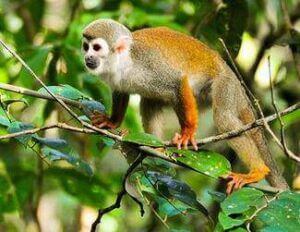作者 TEIA台灣環境資訊協會
厄瓜多及聯合國官員上周於哥本哈根表示,由於該國受信託基金支持,將可履行保護氣候及葉蘇尼(Yasuni)國家公園雨林的計劃。厄瓜多將不會開採公園內蘊藏的該國最大儲量的油源。
「葉蘇尼信託基金」將由聯合國發展署管理。這份基金將用於下列事務,包括:減少因園內開採石油產生的二氧化碳、發展替代能源、保護原住民族、並透國永續社會發展以降低貧窮與社會不公。

為了補償厄瓜多放棄開採「ITT」(Ishpingo, Tampococha, Tiputini)區域原油造成的損失,厄瓜多政府要求為期十年、每年3億5千美元的賠償金。
這項「葉蘇尼-ITT」倡議2007年由厄瓜多總統提出後,引得國際社會廣大的興趣。
此倡議旨在避免開採園區地下蘊藏約8億5千萬桶的原油。若放棄開採,可防止約4億7百萬立方噸的二氧化碳排放,並可保護當地的生態及原住民。
葉蘇尼園區被聯合國教科文組織指定為「生物圈保留地」,也是自願與世隔絕、以保存生存方式的當地原住民的家。
占地約250萬公頃、富含原生熱帶雨林的葉蘇尼國家公園於1979年成立,座落於安地斯山脈、亞瑪遜流域及赤道交界處。
珍古德與威爾森等科學家贊譽該公園是全球生態上最重要的熱帶雨林區,並且是23種受威脅的哺乳類的重要棲地,包括:大水獺、亞馬遜海牛、大食蟻獸、 亞馬遜江豚及亞馬遜貘。另有包括受威脅的白腹蜘蛛猴等十種靈長類,以及豐富的獨特鳥類居住在葉蘇尼森林中。也由於其獨特的地理位置,葉蘇尼擁有全世界多樣 性最豐富的樹種及昆蟲類。
多年前,美國德士古(Texaco)石油公司開始在葉蘇尼進行石油開採,其後許多外國石油業者也加入行列。2006年,與兩家中國石油公司結盟的「安地斯石油公司」在葉蘇尼國家公園的帝普地尼河「Tiputini」進行地質鑽探;當地仍是鳥類與野生動物豐富的區域。
過去五年,巴西國營石油公司「Petrobras」一直計畫開發該地區。初期打算建條深入雨林的道路,在此計畫失敗後,又繼續籌劃興建「無道路」的產油設備,也就是鑽油平台。
「葉蘇尼-ITT倡議」及「葉蘇尼公園信託基金」將可望為這些破壞性的石油開採及開發活動劃下句點。
Ecuador’s initiative to protect the climate and the rainforest of Yasuni National Park by leaving its largest oil reserve in the ground will be supported by a new multi-donor trust fund to offset lost oil revenue, Ecuadorian and United Nations officials announced last week in Copenhagen.
The Yasuni Trust Fund will be managed by the UN Development Programme. It will focus on reducing carbon dioxide emissions by permanently foregoing extraction of fossil fuels from the park; developing alternative energy; protecting indigenous groups; and reducing poverty and inequality through sustainable social development.
In exchange for keeping the crude oil in the ground in the Ishpingo, Tampococha, Tiputini (ITT) region, the Ecuadorian government has asked for compensation of $350 million a year for 10 years.
The Yasuni-ITT initiative was proposed in 2007 and has been met with widespread international interes.
The initiative aims to prevent the extraction of an estimated 850 million barrels of crude oil in the ground beneath the park. This would prevent the release of 407 million metric tonnes of carbon dioxide and would also protect the indigenous peoples and unique plants and animals that inhabit the park.
The park is designated as a UNESCO Biosphere Reserve and is home to indigenous peoples who live in voluntary isolation to protect their way of life.
Covering nearly 2.5 million acres of primary tropical rainforest at the intersection of the Andes, the Amazon and the equator, Yasuni National Park was created in 1979.
Described by scientists such as Dr. Jane Goodall and Dr. E.O. Wilson as one of the world’s most biologically important tropical rainforests, Yasuni is critical habitat to 23 globally threatened mammal species, including the giant otter, the Amazonian manatee, the pink river the giant anteater, and the Amazonian tapir. Ten primate species live in the Yasuni, including the threatened white-bellied spider monkey, together with a wealth of unique birds.
As a result of its unique location, Yasuni contains what are thought to be the greatest variety of tree and insect species anywhere on the planet.
Oil extraction from Yasuni started several decades ago by Texaco, followed by many other foreign oil companies.
Andes Petroleum, a partnership between two Chinese state oil companies, conducted a seismic exploratory operation in Yasuni National Park in 2006 on the Tiputini River, one of the most intact parts of Yasuni, which is still filled with birds and wildlife.
Over the past five years, Brazil’s state oil company Petrobras has been planning for development in Yasuni – first with roads into the rainforest and then, when that plan was turned down, with a oadless?plan to build oil production facilities.
The new initiative and trust fund may put an end to such destructive oil exploration and development operations.
全文及圖片詳見:ENS




